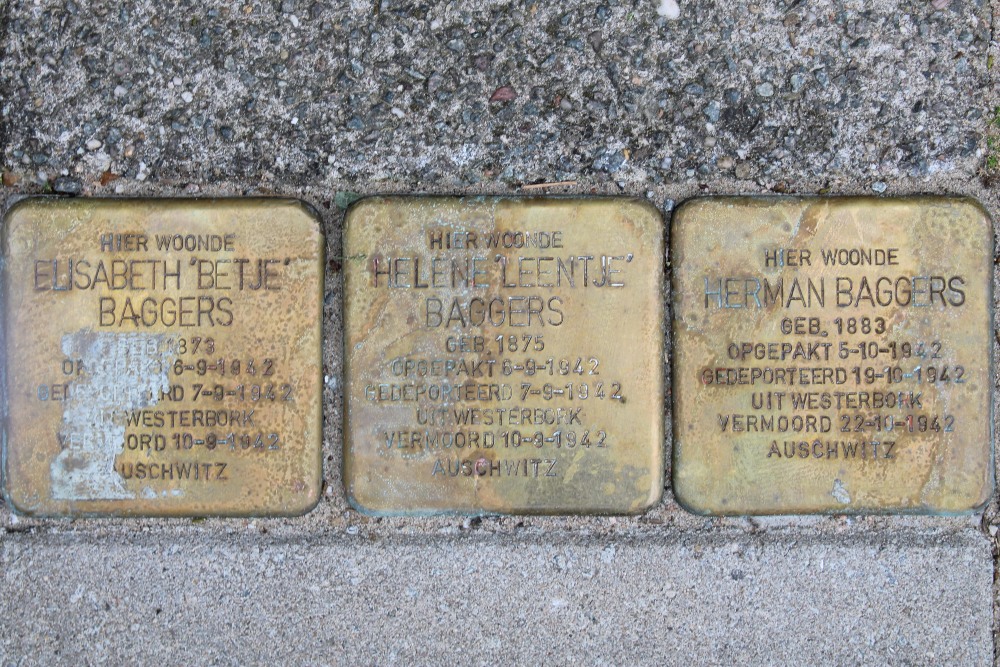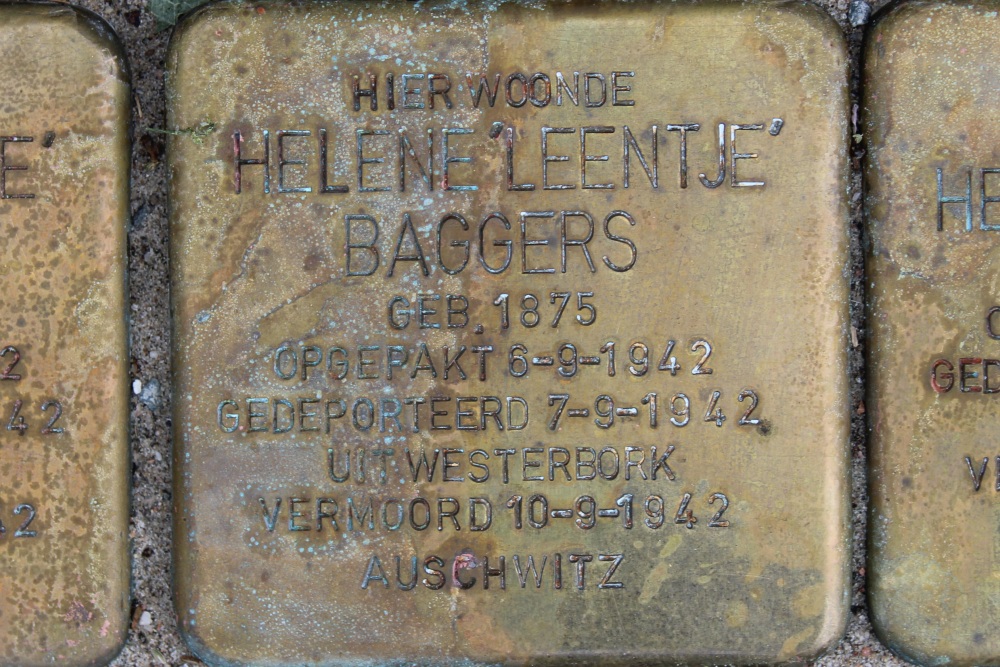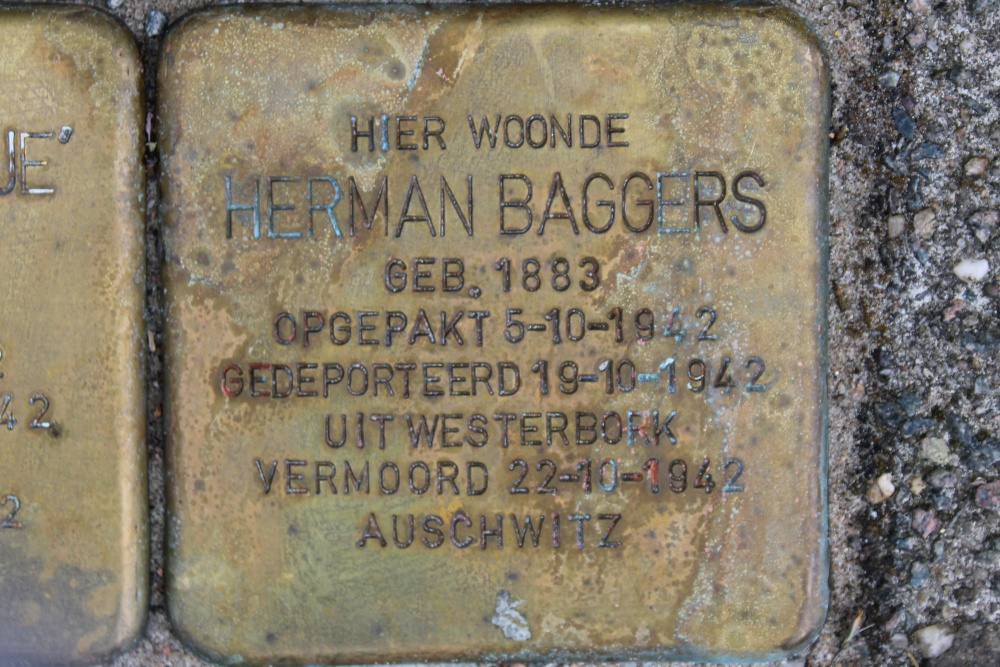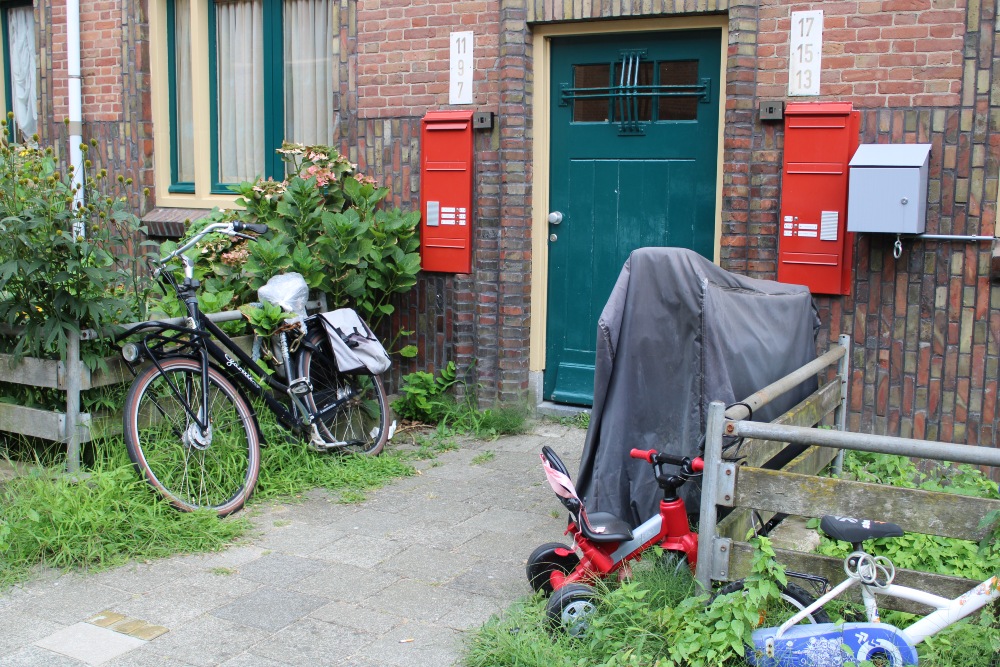Stumbling Stones Topaasstraat 7
These small, brass memorial plaques (Stolpersteine or stumbling stones) commemorate:
* ELISABETH 'BETJE' BAGGERS, born 1873, deported on September 7, 1942 from Westerbork, murdered on September 10, 1942 in Auschwitz.
* HELENA 'LEENTJE' BAGGERS, born 1875, deported on September 7, 1942 from Westerbork, murdered on September 10, 1942 in Auschwitz.
* HERMAN BAGGERS, born 1883, deported on October 19, 1942 from Westerbork, murdered on October 22, 1942 in Auschwitz.
These Stumbling Stones are here for Jewish war victims deported and murdered in the Second World War.
Herman Baggers arrived with many Jewish men from Amsterdam on September 2, 1942 at the Labour Camp 't Schut in Ede. All this under the supervision of German guards. Their work was most likely to develop land for the Dutch 'Heidemaatschappij'. In the night of October 2 to 3, 1942, during Yom Kippur, the camp was emptied and all Jews were taken to Arnhem. The next day they were transported to Westerbork and from there left for the extermination camps.
"Stolpersteine" is an art project for Europe by Gunter Demnig to commemorate victims of National Socialism (Nazism). Stolpersteine (stumbling stones) are small, 10x10cm brass plaques placed in the pavement in front of the last voluntary residence of (mostly Jewish) victims who were murdered by the Nazis. Each plaque is punched with the victim’s name, date of birth, and place (mostly a concentration camp) and date of death. By doing this, Gunter Demnig gives an individual memorial to each victim. One stone, one name, one person. He cites the Talmud: "A human being is forgotten only when his or her name is forgotten."
These Stumbling Stones are here for Jewish war victims deported and murdered in the Second World War.
Do you have more information about this location? Inform us!
Source
Nearby
Museum
- Memorial Centre Hollandsche Schouwburg Amsterdam - Amsterdam
- National Holocaustmuseum - Amsterdam
- Jewish Museum - Amsterdam
Point of interest
- Berlageschool - Amsterdam
- Painted House Number Vechtstraat 10 - Amsterdam
- The Asscher Diamond Factory Amsterdam - Amsterdam
Monument
- Ernst Cahn and Alfred Kohn Bridge Amsterdam - Amsterdam
- Memorial Stone Liberation 1945 Weesperkwartier - Amsterdam
- Monument 'Leendert Pop' - Amsterdam
Cemetery
- Dutch War Graves Zorgvlied Cemetery - Amsterdam
- Dutch War Graves New Eastern Cemetery Amsterdam - Amsterdam
- Polish War Graves New Eastern Cemetery Amsterdam - Amsterdam
Remembrance Stone
- Stumbling Stones Topaasstraat 1 - Amsterdam
- Stumbling Stones Topaasstraat 2 - Amsterdam
- Stumbling Stones Smaragdstraat 67 - Amsterdam
Fortification
- Stelling van Amsterdam - Willem III-sluis - Amsterdam
- Stelling van Amsterdam - Willem I-sluis - Amsterdam
- Marinevliegkamp Schellingwoude (Seefliegerhorst Schellingwoude) - Shelter - Amsterdam








